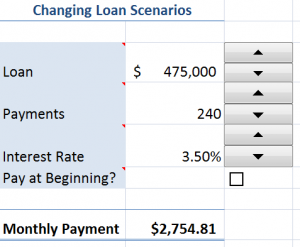The CHOOSE Function in Excel is an incredibly useful – albeit, relatively unknown – tool to use when you need to look up a Value in a list. In Excel 2007, you can now use CHOOSE to return up to 254 different Values in a list! (In Excel 2003, the limit is 29 values.)
Here is the Syntax: =CHOOSE(Index_Num, Value1, Value2…) where the Index_Num is a positive serial number between 1 and 254 (In Excel 2007)
In this lesson, I first demonstrate how to look up a “label” (January, February, etc.) for a cell that contains a “Number” for the month (1,2,3, etc).
Rather than struggle with “nested IF()statements,” use the CHOOSE Function when you need to return a value for any number between 1 and 254 – it is so much easier!
Click here to watch this Excel Lesson on YouTube in High Definition Full Screen Mode.
Learn how to “Master Excel in Minutes – Not Minutes!”


